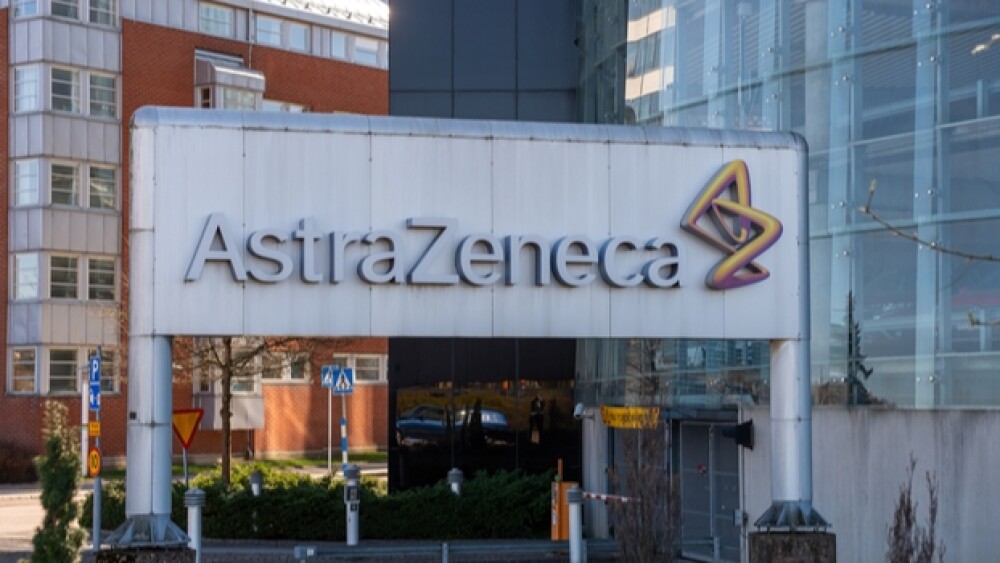AstraZeneca and the University of Oxford published an interim analysis of their four Phase III clinical trials of AZD1222, their COVID-19 vaccine.
Anna in Sweden/Shutterstock
AstraZeneca and the University of Oxford published an interim analysis of their four Phase III clinical trials of AZD1222, their COVID-19 vaccine. The data was published in The Lancet and demonstrated the vaccine is safe and effective at preventing symptomatic COVID-19. It also protects against severe disease and hospitalization.
The efficacy is 70.4%, quite a bit below that of the Pfizer-BioNTech vaccine, which began vaccinations in the UK yesterday and is expected to be granted Emergency Use Authorization (EUA) in the U.S. this week, and the Moderna vaccine, which will be up for EUA next week in the U.S. Both suggested efficacy of around 95%.
“What we can see looks reasonable, but it’s a bit more complicated than what we’ve seen so far,” Buddy Creech, a Vanderbilt University researcher, told AP. “If this had been the first report out, the field would have still been excited to have a vaccine.”
The AstraZeneca-Oxford data was partial results from studies in the UK, Brazil and South Africa, with safety data on 23,745 participants and protection levels on 11,636. Complicating the analysis, as reported earlier, a cohort of the trial accidentally received half-doses of the initial shot, and that group demonstrated efficacy up to 90%, which has still not been explained. The broader dosing regimen demonstrated 62% efficacy, with the average analysis demonstrating about 70%. For a vaccine, 70% efficacy is very good, but does fall well below the Pfizer-BioNTech and Moderna vaccines.
However, the data also suggests the possibility of protection after a single dose. And at least one dosing regimen appears to have decreased the number of asymptomatic infections, something which has not been evaluated in either of the other two vaccine candidates, Pfizer-BioNTech and Moderna.
“This warrants—it’s screaming for—more work in the area,” Saad Omer, director of Yale University’s Institute of Global Health and a vaccine researcher, told STAT. “You can’t ignore the results but you have to be judicious about moving forward.”
Another problematic issue is in the group that received the half-dose with the 90% efficacy, there was no one over the age of 55. It’s unknown if that is part of the effect or simply a random variable.
“I think there remain questions about whether the result in the low-dose standard dose is a real robust biological result,” Natalie Dean, a biostatistician at the University of Florida, told STAT. “Will it hold up?”
There is speculation that the lower dose primed the immune system more effectively than the standard dose. If that was the case, it would allow more people to be dosed, with what is increasingly looking like global rollout of vaccines that will be slower than desired because of relative lack of supply. The Trump administration reportedly passed on the opportunity this summer to acquire additional doses of the Pfizer-BioNTech vaccine beyond the 100 million it acquired in July for $1.95 billion. Pfizer and BioNTech had approached the Trump administration with an option of 100 million to 500 million additional doses, but the offer was declined. The two companies then made deals with Europe and other countries for that supply.
All in all, the AstraZeneca-Oxford vaccine is very promising. No hospitalizations or severe cases of COVID-19 were reported in the dosing group more than 21 days after the first dose; 10 people in the placebo group were hospitalized from COVID-19, with two evaluated as severe, including one fatality.
The safety data is promising as well, with the vaccine being well tolerated with no serious safety events related to the vaccine. The participants had a diverse racial and geographic makeup in people who are healthy or had stable underlying medical conditions. The overall reports of serious adverse events were 0.7% in the vaccine group and 0.8% in the control group.
“Today’s peer-reviewed publication enables a full disclosure of the Oxford program interim analysis,” stated Pascal Soriot, AstraZeneca’s chief executive officer. “The results show that the vaccine is effective against COVID-19, with in particular no severe infections and no hospitalizations in the vaccine group, as well as safe and well tolerated. We have begun submitting data to regulatory authorities around the world for early approval and our global supply chains are up and running, ready to quickly begin delivering hundreds of millions of doses on a global scale at no profit.”
In earlier reports, about 40% of the AstraZeneca-Oxford vaccine was to be delivered to low- and middle-income countries. They are also continuing to conduct clinical trials in the U.S. and globally.
AstraZeneca indicates it expects to have capacity to manufacture up to 3 billion doses in 2021 on a rolling basis, pending regulatory approval. Unlike the Pfizer-BioNTech vaccine, which requires extremely cold storage of about -94 degrees F, and the Moderna vaccine, which is stable at 36 to 46 degrees F but requires long-term storage at -4 degrees F, the AstraZeneca-Oxford vaccine can be stored, transported and handled at normal refrigerated temperatures of about 36 to 46 degrees F for at least six months.
Although they are submitting data to regulators, AstraZeneca seems to expect that the U.S. Food and Drug Administration will require it to complete its ongoing, larger U.S.-based clinical trial before issuing an EUA in the U.S.
Soriot noted, “It is really important to have several vaccines. In fact, if you added the announced capacity of Pfizer, Moderna, and ours, they still aren’t enough to vaccinate a sufficient number of people around the world. We need all the vaccines.”





